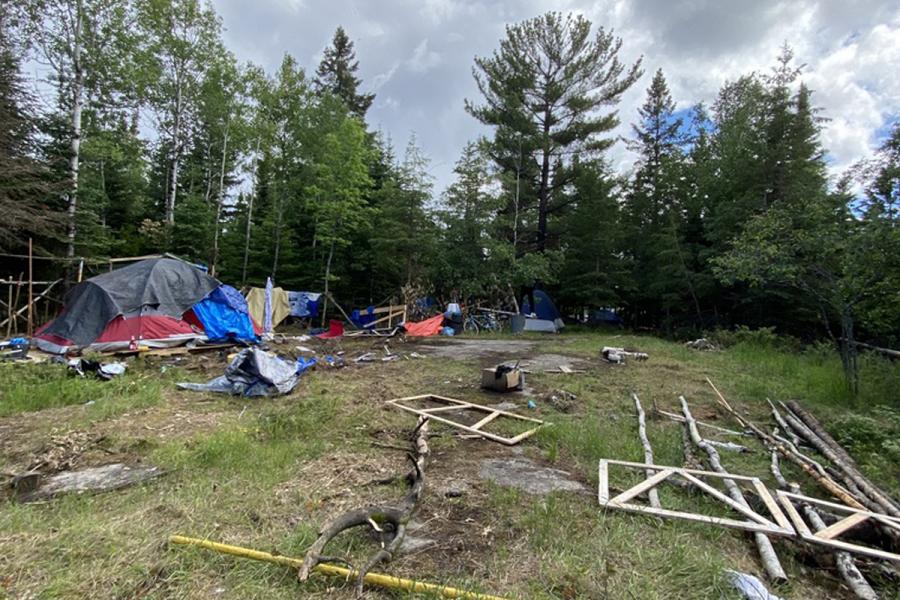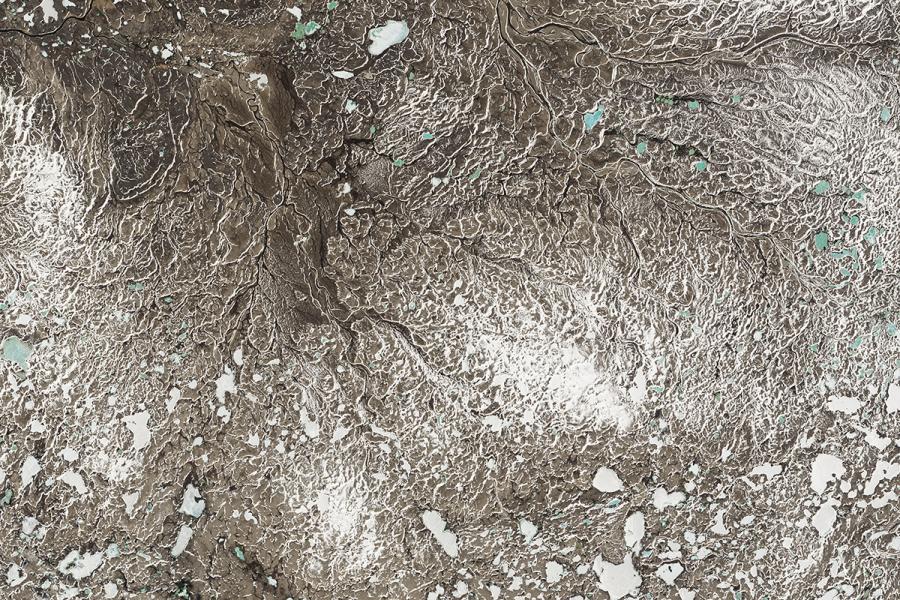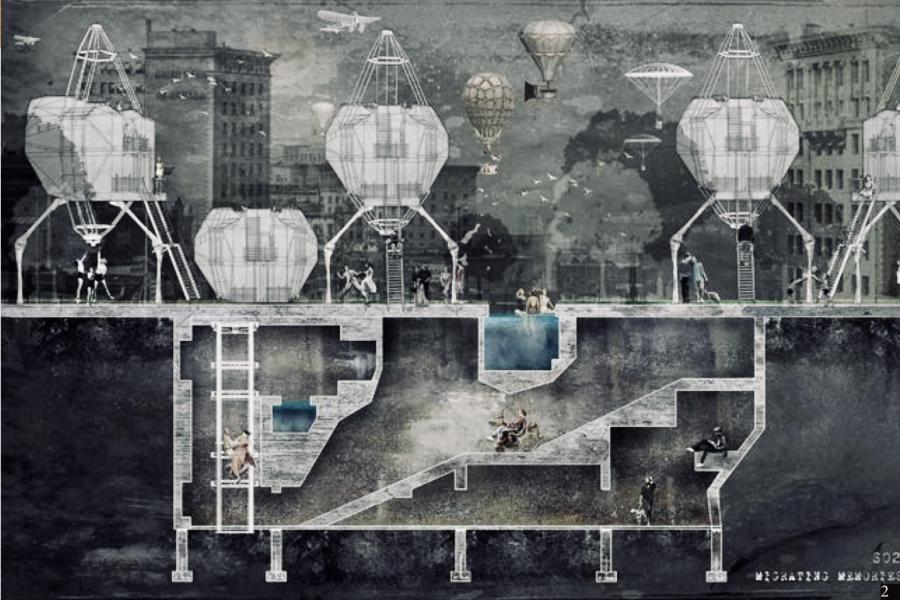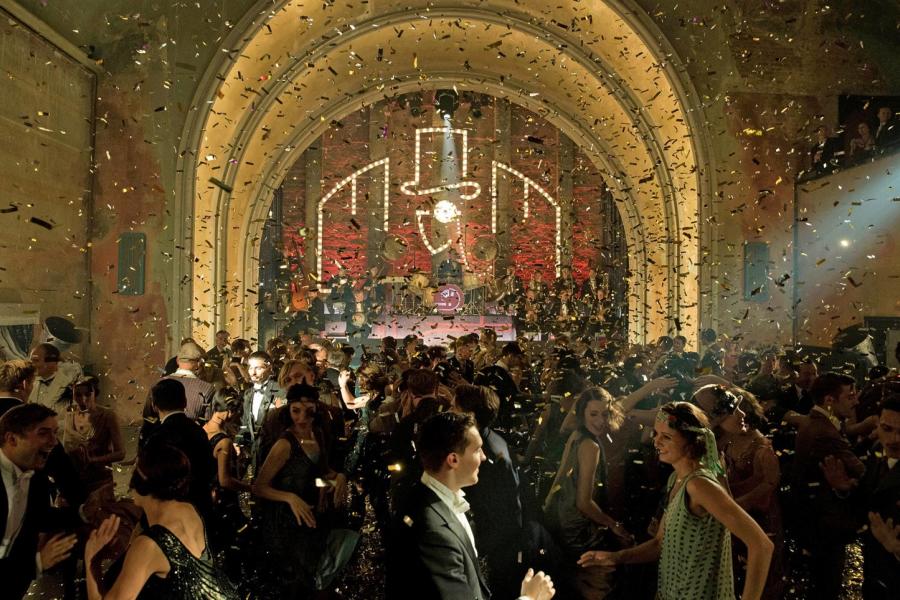2020-2021 Studio Descriptions
Studio presentations will take place on Tuesday, September 8 at 10:00am. Information on the remote session has been distributed to students via email. See the 2020 - 2021 Welcome Letter for details about the studio selection / assignment process.
ED4/AMP2 studios

Learn more about Kahnowiiyaa "Everyone"
The housing crisis has been one of the greatest challenges facing northern communities for several decades. The Senate report on housing in Indigenous communities [1] has indicated that housing conditions are deteriorating fast due to the increased demand for new housing units, overcrowding, mould contamination, poor construction, and the high numbers of homes in need of major repair. The difficult social and physical conditions facing Indigenous communities has caused an increase in homelessness and addictions nationally.
By prioritizing colonial practices, communities have experienced a disconnect from tradition, leaving many Indigenous communities and individuals out of balance. Social policies continue to encourage the abandonment of Indigenous tradition and culture. By adhering to the self-determination right [2], it is Indigenous peoples who should determine and define their own space and housing to meet their needs, traditions, rituals and Indigenous values [3].
Ontario’s Human Rights Commissions (OHRC) [4] stated that:
“...many positive steps are being taken to address acute homelessness and drug addiction, which disproportionately affect First Nations people living in the community. However, in our view, the success of those initiatives is hindered by a lack of effective communication between government agencies and the Indigenous-led organizations that provide services on the ground, as well as systemic issues related to housing and social services.”
If sustainable housing is to be addressed, a new methodology and approach is needed, one that returns to culture and tradition. Both Indigenous and non-Indigenous communities have an important role to play in reconciliation by recalling the ecological, social and communal responsibilities that have been abandoned in place of colonial methodologies. The OHRC was clear on how this can be addressed when it stated that the government and other organizations must all partner with the local initiatives that are dealing with hands on projects as soon as possible, to help provide the funding and technical aid for local organizations to flourish [5].
One initiative that embraced this approach was ‘Homes for Hope’, a collaborative work completed by USC architecture students and the MADWORKSHOP that helped combat homelessness in Los Angeles, California [6]. This project exemplifies a grassroots approach that discovers and provides new housing opportunities. In this collaboration, a team of students worked with the homeless, city officials, planners and other community partners through all aspects of the development, resulting in an effective housing strategy at an affordable cost.
The mantra “nothing about us, without us” talks about representation and the need for full inclusion of the people affected by decisions when they are being made. Using the mantra as a guiding principal the studio will look critically at the process of architecture as a tool to inspire a sense of pride and assist in growing a community grounded by culture and relationships.
Student will partner with local elders, knowledge keepers, planners, government officials, grass roots initiatives and members of the street family to the confront the subject of affordable housing, and programming that supports healing. No major fieldtrip will take place, however there will be scheduled trips to Kenora, and the Aubin Roundhouse situated in the community of Wauzhushk, Onigum (as COVID-19 permits). The studio has been invited to take part in ceremony including a sweat lodge, drumming and sharing circles to help move the project forward in a good way.
By adjoining partnership with Indigenous knowledges and perspectives, the intent will be to guide processes through Indigenous values focused on the interconnectedness with the environment and incorporate them into ecological design responses. We will investigate how the application of Indigenous Knowledge can inform a respectful way of negotiating with modern design thinking and practices. The outcome of this work will be to empower the community and proposition a new paradigm for approaching homelessness and addictions in the City of Kenora. Currently, the studio partners are working with the Douglas Family Art Centre / Lake of the Woods Museum developing a plan to share the body of work to the public in Spring 2021.
Works Cited:
1. Housing on First Nation Reserves: Challenges and Successes, 2015, Interim Report of the Standing Senate Committee on Aboriginal Peoples, https://sencanada.ca/content/sen/Committee/412/appa/rep/rep08feb15b-e.pdf.
2. Canadian Issues, Vol. 21, Aboriginal Peoples in Canada/Futures and Identities, 1999, pp. 124-142.
3. Overview of a Recognition and Implementation of Indigenous Rights Framework, Government of Canada, https://www.rcaanc-cirnac.gc.ca/eng/1536350959665/1539959903708.
4. Ontario Human Rights Commission, “Report and recommendation on Homelessness in Kenora Ontario Human Rights Commission”,OHRC engagements with Kenora, July 07, 2020, http://www.ohrc.on.ca/en/news_centre/report-and-recommendations-homelessness-kenora
5. Ontario Human Rights Commission, “Report and recommendation on Homelessness in Kenora Ontario Human Rights Commission”, July 07, 2020, http://www.ohrc.on.ca/en/news_centre/report-and-recommendations-homelessness-kenora
6. Musca, Thomas. USC Architecture Students and MADWORKSHOP Collaborate to Combat LA’s Homeless Epidemic. August 06, 2017. Archdaily. Accessed July 08, 2020. https://www.archdaily.com/877132/usc-architecture-students-and-madworkshop-collaborate-to-combat-las-homeless-epidemic



Learn more about BIOM Studio: (radical architecture for) Extreme Environments
Lovelock’s Gaia theory describes our planet as an ever changing super-organism capable of self-regulating and sustaining life. As such, it has overcome multiple chemical, climatic and geological crisis, and it will continue to do so despite humans’ best efforts to destroy the biosphere. Rockstrom identified nine interconnected planetary boundaries that represent critical Earth systems for human survival, and estimated that we have at least transgressed three of these boundaries: climate change, biodiversity loss and nitrogen cycle. This affirmation reinforces the idea that our planet is a complex system of hierarchically organized structures that thrive in a delicate balance of positive and negative feedback loops. As a resilient system, Earth tolerates disruptions and it is able to return to a dynamic equilibrium, but there are thresholds that if disrupted simultaneously or repeatedly can provoke a planetary collapse.
In this context, learning from Nature’s resilient strategies appears as a humbling, and yet powerful, approach to rethinking our aspirations as a species, but also as designers. The BIOM Studio is positioned in this territory where architectural creation is inspired by a careful consideration of Nature’s lessons of adaptation and survival to address environmental challenges and respond to societal and technological requirements of our profession.
Manifestations of Earth’s system disruptions in human infrastructures are abundant. From flooded cities, to inadequate air quality in buildings due to air pollution or sudden health risks, as well as failing structures caused by atypical strong winds, and escalation in resources use (energy-material) and GHG emissions to maintain hygrothermal comfort, among others. This disrupted reality is slowly but consistently becoming the ‘new normal’ and architects have to be prepared to work in extreme environments, and more importantly, in cooperation with these environments.
Extreme environments can be defined by climatic conditions (e.g. extreme temperature, humidity, winds), by social conditions (e.g. COVID’s imposed isolation, housing crisis caused by overpopulation/market, social inequality) or even by outer space requirements (e.g. orbital habitats, Moon or Mars colonies). However, in all cases architects have to become true system thinkers if we are to transcend the boundaries of our discipline.
In doing so, the BIOM studio will encourage students to explore biologically inspired venues to expand their creativity, undertake environmental challenges and deliver radical architectures for extreme environments

Learn more about W Studio: Winnipeg's Architecture, a Metaphorical Journey
W is a place-based studio with Winnipeg as design laboratory for the imaginative conception of individual architectural infill projects, and collective urban design ones. In terms of theory and method the studio will elaborate on the potential for architectural design to benefit from establishing metaphorical connections between the local and the global, in search for conceiving architecture that, responding to place-specificity, contains and conveys disciplinary universal elements (universals) via local interventions of contextual value. The studio will strategize based on the idea of an imaginary travel, of poetic nature, connecting local sites (urbanistic and architectural situations) with relevant others across time and geography—articulated for creative purposes.
Winnipeg is a characteristic modern North American city which exemplifies three typical urbanistic morphologies, developmental situations, and architectural conditions, that deserve to be studied and explored through design. These are:
The Business District: represented by our iconic “Exchange” yet connecting with analogous districts in the North American Mid-West and abroad, like The Loop (Chicago) or Montreal Central Business District, among others.
The Strip: meaningfully recognized in its potential to inform contemporary architecture and urban design since Venturi & Scott-Brown’s Learning From Las Vegas, Winnipeg most significant arteries and vital multi-use corridors like Portage and Pembina fall within that urban morphology.
The Suburb: ‘natural’ counterpart to the business district, suburbs represent modern idealization of nature: a romantic illusion of a return to it. Suburbs constitute the quintessential setting for the, until recent, undisputed American Dream. And they continue to proliferate despite changing demographics. They were inspired on theoretical reflection and practical experimentation starting in the 19th century on both sides of the Atlantic prompted by the advent of the industrial city and evolved into a post-metropolitan condition. Their appeal, limitations, and possibilities for contemporary architecture and urban design will be analyzed and put to test.
In the course of the year, Students will develop individual (architectural) and collective (urban design) projects:
The studio will be divided into three groups, each one focusing on a different urban morphology (Business District, Strip, and Suburb) with collective sites to analyze and explore through urban design propositions. Within each group and urban situation, sites at the scale of architectural (single building) interventions will also be identified and analyzed a for the subsequent development of final individual infill projects.
In this way W Studio attempts to address the relationship between architecture and the city in Winnipeg comprehensively and in depth.

Learn more about Berlin Babylon Studio: Intersections of Cinema and Architecture
The Faculty of Architecture’s Acting Dean has ascertained that we are experiencing a ‘profound paradigm shift’. As such, we must ‘learn new approaches to teaching’, to be ‘innovative, creative, and inventive’ while relying on our ‘ingenuity to carry us through these unprecedented times’. The Berlin Babylon Studio strives to do precisely this: utilizing not only Berlin’s deep and rich architectural and urban histories, but its often dazzling cinematic histories. By unleashing the intensity and power of the cinematic experience, we will gain the necessary insights—historical and contemporary—appropriate to imagining and designing an urban intervention in the contested terrain of Berlin.
Ralph Stern has taught Architecture and Urban Design Studios as well as History and Theory courses (including cinema) in Berlin at the Technical University Berlin and the University of the Arts, at M.I.T., Columbia University, The London School of Economics, The University of Washington as well as at the University of Manitoba. Among a wide range of venues, he has lectured on these topics at Harvard, Yale, Cambridge University, Charles University (Prague), the Central European University (Budapest) and the University of Edinburgh as well as at numerous international conferences. He has also published widely on the topics of urban representation in books and journals.
